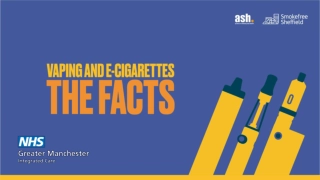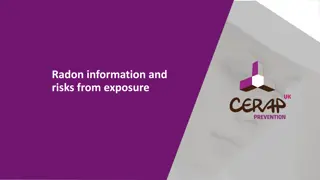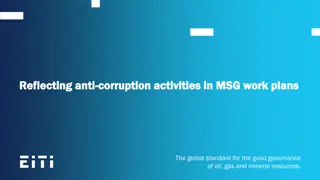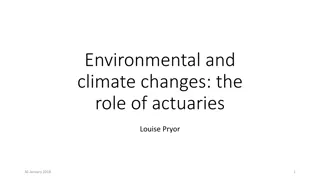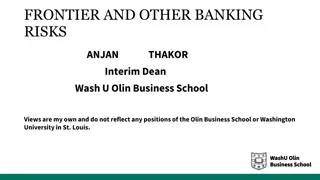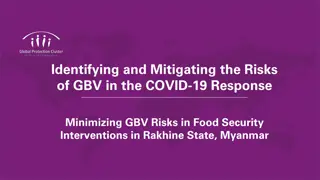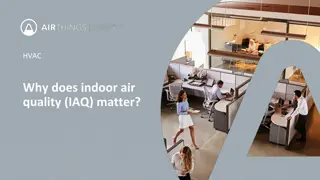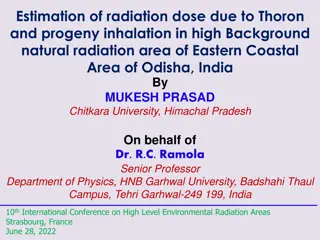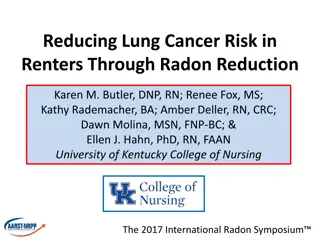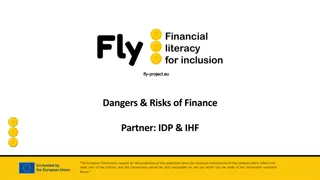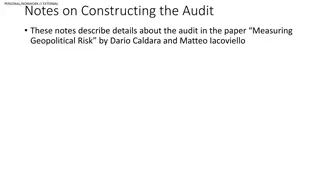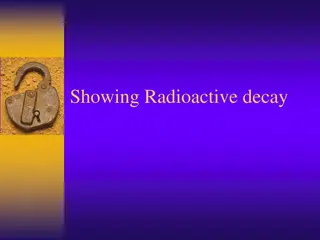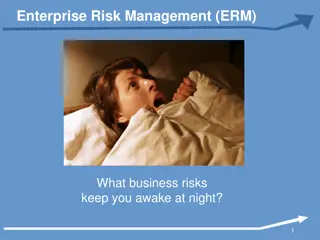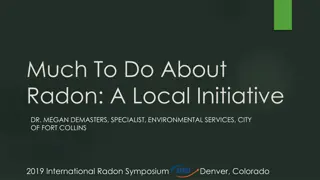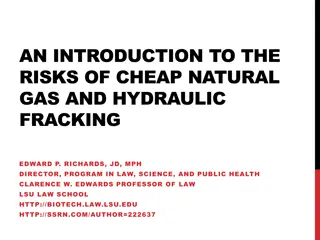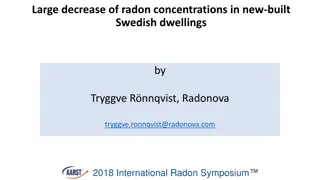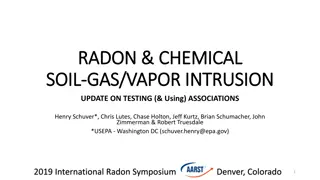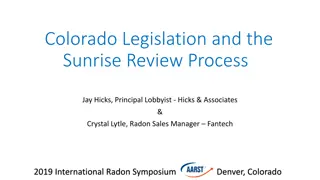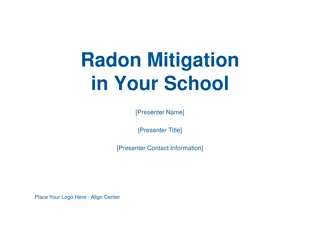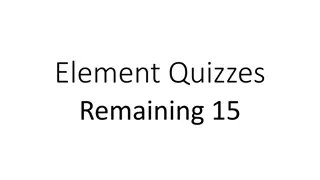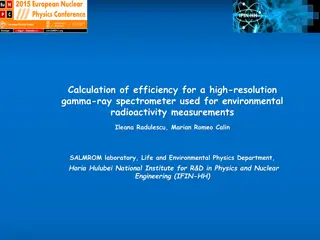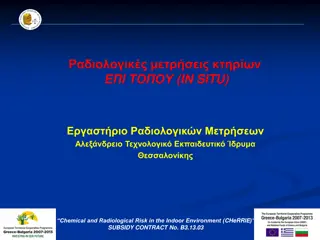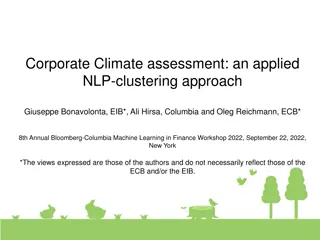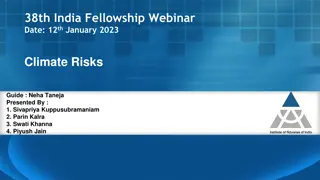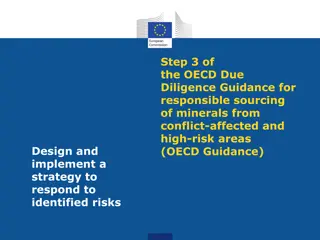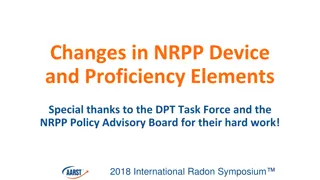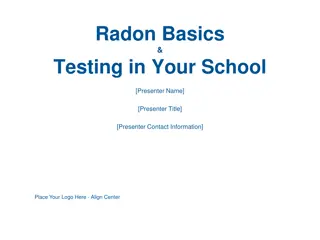Long-term Health Risks Among Children HIV-Exposed
Study comparing risks of hospitalization and chronic diseases in HIV-exposed uninfected children vs. population control in Montreal, Canada. Data indicates heightened risks in CHEU including bacterial infections, mortality, hospitalization, poor growth, psychiatric disorders, and neurological outcom
0 views • 25 slides
The Truth About Vaping: Health Risks and Environmental Impact
Vaping, seen as a safer alternative to smoking, comes with its own set of risks. While it can help adult smokers quit, it is not without consequences. Short-term effects like coughing and headaches, coupled with unknown long-term impacts, raise concerns. Furthermore, the environmental impact of disp
124 views • 23 slides
Understanding Joint Ventures in Business: Types, Advantages, and Risks
Explore the concept of joint ventures in business, including definitions, differences from partnerships, types, advantages like faster growth and increased resources, and risks such as lack of trust and divergent goals. Joint ventures allow entities to collaborate, share risks and profits, access ne
3 views • 14 slides
Antibiotic Adaptation in Renal Insufficiency - Dosage Adjustments and Risks
Understanding the importance of adapting antibiotic therapy in patients with renal insufficiency is crucial to ensure efficacy and minimize risks. This content covers various factors influencing antibiotic selection, dosing adjustments based on patient parameters, and the risks associated with inapp
0 views • 52 slides
Managing Power Platform Risk with an Environment Strategy by Frank Shink, Senior Power Platform Design Engineer at Ameriprise Financial
Frank Shink, a seasoned professional, delves into the risks associated with Power Platform, from development risks to cost risks, and offers insights on tools and strategies to combat these risks effectively. He emphasizes the importance of environments, DLP policies, and licensing strategies in mit
1 views • 20 slides
Understanding Radon Exposure Risks and Prevention Measures
Radon is a colorless, odorless radioactive gas present in rocks and soils. It can enter buildings through cracks and pipes, posing health risks like lung cancer. Exposure to radon can lead to radiation damage to cells and increase the risk of cancer. It's essential to be aware of radon levels in ind
1 views • 14 slides
Understanding Genetic Testing and Cancer Screening
Genetic testing involves the analysis of germline genes to determine the risk of developing certain cancers or passing on risks to offspring. It can provide valuable insights into cancer risks, help inform relatives about potential risks, but may have limitations and risks such as cost and insurance
0 views • 10 slides
Enhancing Anti-Corruption Activities in Extractive Sector Work Plans
Reflecting on anti-corruption activities in MSG work plans is crucial for good governance of oil, gas, and mineral resources. The EITI provides guidance on addressing corruption risks, with a recommended three-step approach: assess risks, develop an activity plan, and monitor results. Step 1 involve
0 views • 11 slides
Understanding Radiation Pollution and Its Effects
Radiation pollution, whether ionizing or non-ionizing, is a significant environmental concern. Ionizing radiation can penetrate tissues and cause damage to living cells, while non-ionizing radiation may effectively sterilize microbes. Sources of radiation include cosmic rays, terrestrial elements li
0 views • 15 slides
The Role of Actuaries in Addressing Environmental and Climate Changes
Actuaries play a crucial role in assessing and managing risks posed by environmental and climate changes, aiding the insurance industry in mitigating these challenges. They consider long-term risks with significant financial implications, such as physical, transitional, and liability risks. Actuarie
0 views • 20 slides
The Noble Gases: Properties, Sources, and Uses
The noble gases, including helium, neon, argon, krypton, xenon, radon, and Oganesson, are characterized by their low reactivity due to a complete electron configuration. They have diverse applications, such as forming inert atmospheres, medical treatments, and lighting technologies. Naturally occurr
0 views • 16 slides
Banking Risks and Responses in Today's Financial Landscape
Anjan Thakor, Interim Dean at Wash U. Olin Business School, discusses various banking risks such as tension between fiscal and monetary policies, cyber security, rising consumer indebtedness, war and geopolitical risks, and more. The article explores how these risks can become systemic and suggests
7 views • 7 slides
Identifying and Mitigating GBV Risks in COVID-19 Response for Food Security in Rakhine State, Myanmar
Rakhine State faces challenges of conflict, displacement, and restricted movement, with many relying on food assistance. Cash assistance implementation did not escalate GBV risks. The COVID-19 restrictions heightened the need for adjustments in programming, requiring monitoring of assistance changes
0 views • 5 slides
Understanding Artificial Intelligence Risks in Short and Long Term
This content delves into the risks associated with artificial intelligence, categorizing them into short-term accident risks and long-term accident risks. Short-term risks include issues like robustness problems and interruptibility, while long-term risks focus on competence and alignment challenges
0 views • 15 slides
Developing and Implementing a National Radon Action Plan: Key Phases and Considerations
This learning programme by the International Atomic Energy Agency focuses on the development and implementation of a National Radon Action Plan. It covers the typical elements, timelines, and phases involved in creating such a plan, emphasizing radon reduction, prevention, and synergies with real es
0 views • 25 slides
Importance of Indoor Air Quality in HVAC Systems
Indoor air quality (IAQ) is crucial for HVAC systems as it directly impacts health, productivity, and overall well-being. Poor IAQ leads to health issues, decreased productivity, and higher absenteeism. The selection of HVAC equipment must prioritise energy efficiency, humidity control, and IAQ. The
0 views • 13 slides
Estimation of Radiation Dose Due to Thoron and Progeny Inhalation in Odisha, India
This study conducted in the Eastern Coastal Area of Odisha, India, focuses on estimating radiation doses resulting from thoron and progeny inhalation in a high natural background radiation environment. The research explores exposure to thoron, its progeny, dose conversion factors, experimental techn
0 views • 17 slides
Radon Regulation and Public Information Guidelines
This document outlines the Federal Radon Law, Indoor Radon Abatement Act, Citizen's Guide, Construction Standards, and IRAA Tech Assistance pertaining to radon regulation and public information. It emphasizes the goal of maintaining indoor air quality free of radon, provides action levels for radon
1 views • 17 slides
Addressing Lung Cancer Risk in Renters: Strategies for Radon Reduction
Lung cancer risk in renters due to radon exposure is a significant concern, especially for those in lower-income brackets. This article sheds light on the synergistic risks of radon and tobacco smoke, emphasizing the importance of reducing radon levels in rental properties to safeguard the health of
0 views • 24 slides
Managing Financial Risks in a Changing Climate Environment
Assessing climate-related and environmental risks is vital for ensuring the safety and soundness of financial institutions. These risks include physical risk drivers like extreme weather events and transition risk drivers related to policy measures and technological changes. The complexity and uncer
0 views • 11 slides
Addressing Climate Change Risks: Guidance for Senior Managers and Board Members
This slide pack tool provides guidance on addressing climate change risks for senior managers and board members. It covers key messages such as understanding obligations and gaps, identifying climate change risks, exploring responsibilities, and implementing actions to address these risks effectivel
0 views • 11 slides
Understanding Financial Risks and Mitigation Strategies
Explore the concept of financial risks, learn how to identify and mitigate them, and improve your financial decision-making skills. This module covers definitions, typical risks, and strategies to safeguard your finances. Discover the four main clusters of financial risks and how to implement counte
0 views • 17 slides
Insights on Constructing Geopolitical Risk Audit
Details on constructing the audit for the paper "Measuring Geopolitical Risk" by Dario Caldara and Matteo Iacoviello are outlined. It covers the process of building the GPR index, designing the audit sample, and coding articles to identify geopolitical risks discussed in newspapers. The methodology
0 views • 17 slides
Understanding Radioactive Decay and Isotopes in Chemistry
Explore the fascinating world of radioactive decay, isotopes, and nuclear transformations in this educational resource. From reviewing atomic numbers to illustrating alpha and beta decay processes, discover the fundamental principles behind these phenomena with detailed explanations and visuals. Del
0 views • 17 slides
Enterprise Risk Management (ERM) Strategies for Mitigating Key Business Risks
Enterprise Risk Management (ERM) is a crucial strategic discipline that involves prospectively identifying, managing, and mitigating risks to reduce uncertainties and ensure organizational objectives are met. Risk rankings, mitigation strategies, and lead roles are outlined in the SJIEMS 2017 ERM Re
0 views • 38 slides
Understanding Fort Collins Radon Program: A Local Initiative
The City of Fort Collins has developed a comprehensive Radon Program focusing on community outreach, testing requirements, and communication of health risks. They offer discounted test kits, require information during real estate transactions, and aim to enhance awareness about the dangers of radon
0 views • 19 slides
Understanding the Risks of Cheap Natural Gas and Hydraulic Fracking
This introduction delves into the multifaceted risks associated with the exploitation of cheap natural gas and hydraulic fracking. Covering climate risks, economic consequences of petro-states, direct GHG risks, and local environmental risks, the content underscores the complex challenges and implic
0 views • 8 slides
Radon Concentrations in New-Built Swedish Dwellings: Findings from International Radon Symposium
Large decrease in radon concentrations observed in newly built Swedish dwellings, with data analyzed from 1950 to 2016. Dependencies between building year, foundation type, ventilation, and radon levels were evaluated. Results compared against the Swedish reference level of 200 Bq/m3. Measurements i
0 views • 14 slides
Understanding Radon and Chemical Soil Gas Vapor Intrusion
This presentation at the 2019 International Radon Symposium in Denver, Colorado explores the association between radon, chemical soil gas, and vapor intrusion. It discusses the challenges in testing, analyzing differences, and the need for supplemental measurements like radon to validate models. The
0 views • 19 slides
Colorado Legislation & Sunrise Review Process at 2019 International Radon Symposium
Overview of Colorado's Sunrise Review process, which evaluates the need to regulate previously unregulated professions. Applications for regulation must be submitted to COPRRR, with reviews based on statutory criteria. Stakeholder identification and cases of harm are emphasized for public safety and
0 views • 14 slides
Understanding Radon Mitigation in Schools
Exploring the dangers of radon exposure in schools, this presentation covers the radioactive gas's link to lung cancer, how it affects indoor spaces, and the importance of testing for radon levels. Learn about the risks of radon gas, its connection to smoking, and the measures recommended by EPA and
0 views • 21 slides
Exploring the Fascinating World of Chemical Elements Through Visuals
Dive into the captivating realm of chemical elements with this visual presentation, showcasing images and descriptions of elements like Antimony, Platinum, Silver, Radon, Strontium, Xenon, Tin, Mercury, Iodine, Tungsten, Tantalum, Barium, Gold, Lead, and Cesium. Each element is depicted in a unique
0 views • 16 slides
Efficiency Calculation of High-Resolution Gamma-Ray Spectrometer for Environmental Radioactivity Measurements
SALMROM laboratory at IFIN-HH conducts environmental radioactivity monitoring using high-resolution gamma-ray spectrometry. The system includes a Coaxial p-type HPGe detector with reliable traceability. Activities involve evaluating radon concentrations in various environments and assessing radionuc
0 views • 13 slides
Indoor Chemical and Radiological Risk Monitoring Study
The (IN.SITU) Chemical and Radiological Risk in the Indoor Environment (CHeRRIE) study conducted measurements of radon concentrations and e-perm levels in indoor environments from Oct. 2014 to March 2015. The findings show variations in radon and e-perm levels at different times of the day and acros
0 views • 14 slides
Understanding Corporate Climate Assessment Using NLP Clustering
This work explores a novel approach in corporate climate assessment through applied NLP clustering, highlighting the relationship between climate risk and financial implications. The use of advanced techniques like BERT embedding for topic representation and clustering in corporate reports is discus
0 views • 33 slides
Understanding Climate Risks in India: Insights from the 38th India Fellowship Webinar
Explore the impacts of climate risks in India through the lens of physical and transition risks detailed during the 38th India Fellowship Webinar on January 12, 2023. Key topics include climate change interactions, liability risks, and risk management strategies for a sustainable future.
0 views • 37 slides
Responding to Risks in OECD Due Diligence Guidance
Develop and implement a strategic response to identified risks in accordance with the OECD Due Diligence Guidance for responsible sourcing of minerals. The process involves reporting findings to management, devising a risk management plan, implementing the plan, and assessing ongoing risks. Mitigati
0 views • 7 slides
Changes in NRPP Device and Proficiency Elements: Insights from 2018 International Radon Symposium
Explore the latest updates in NRPP device requirements and proficiency elements, highlighting the importance of device-specific training for measurement professionals. The role of manufacturers/laboratories in developing training programs and the recommended course formats are discussed in detail. D
0 views • 12 slides
2017 International Radon Symposium: Crawl Space Safety Guidelines
The content discusses important safety guidelines related to working in confined spaces such as crawl spaces, attics, and pits as presented at the 2017 International Radon Symposium. Topics covered include the definition of confined spaces, permit requirements, written confined space programs, respi
0 views • 13 slides
Understanding Radon: Risks, Testing, and Prevention in Schools
Radon is a colorless, odorless, and tasteless radioactive gas that poses serious health risks, including lung cancer. This presentation covers the basics of radon, its entry into buildings, factors affecting its levels, and why it's a significant problem. Learn how to test for radon in schools and u
0 views • 28 slides

